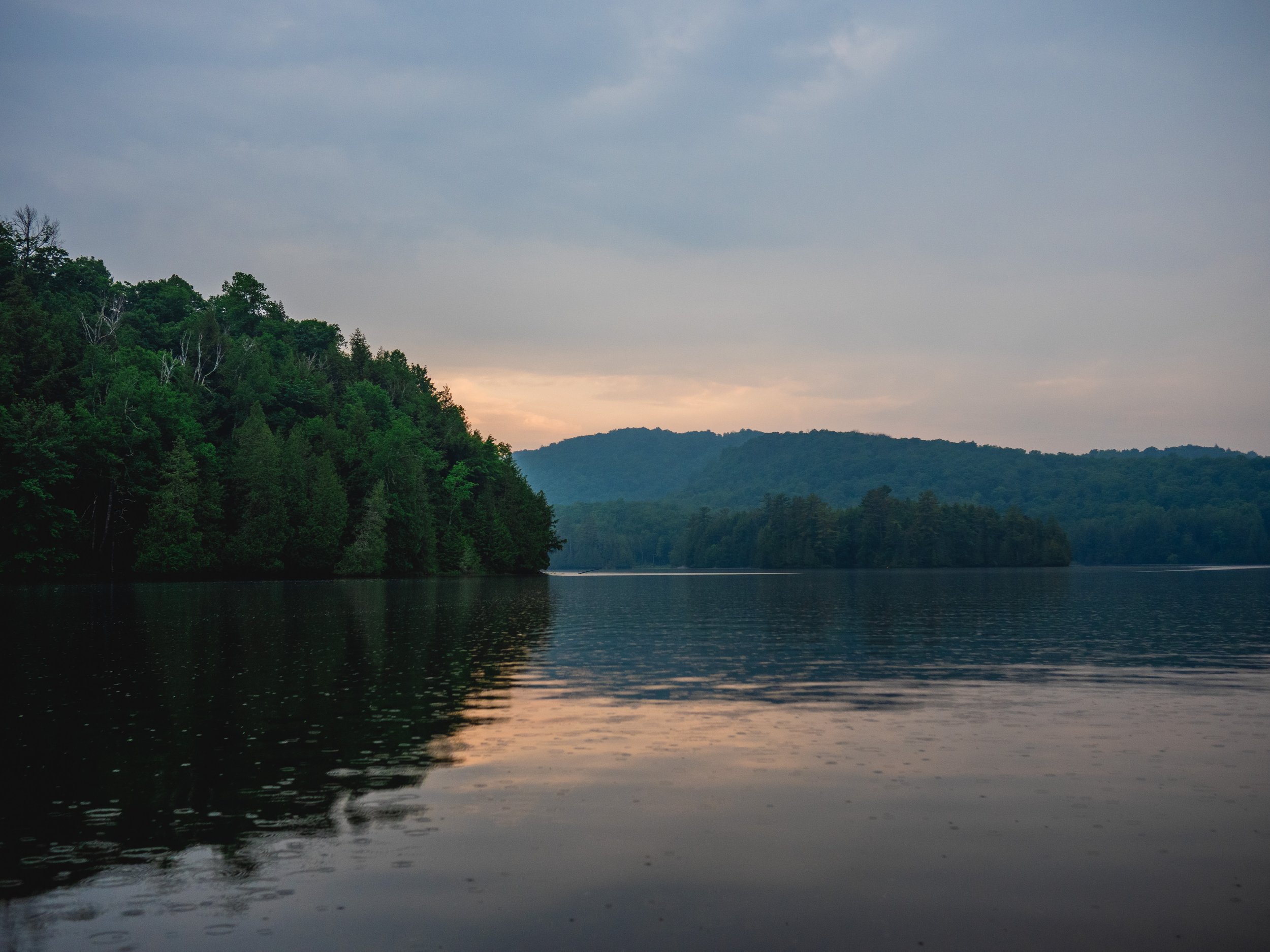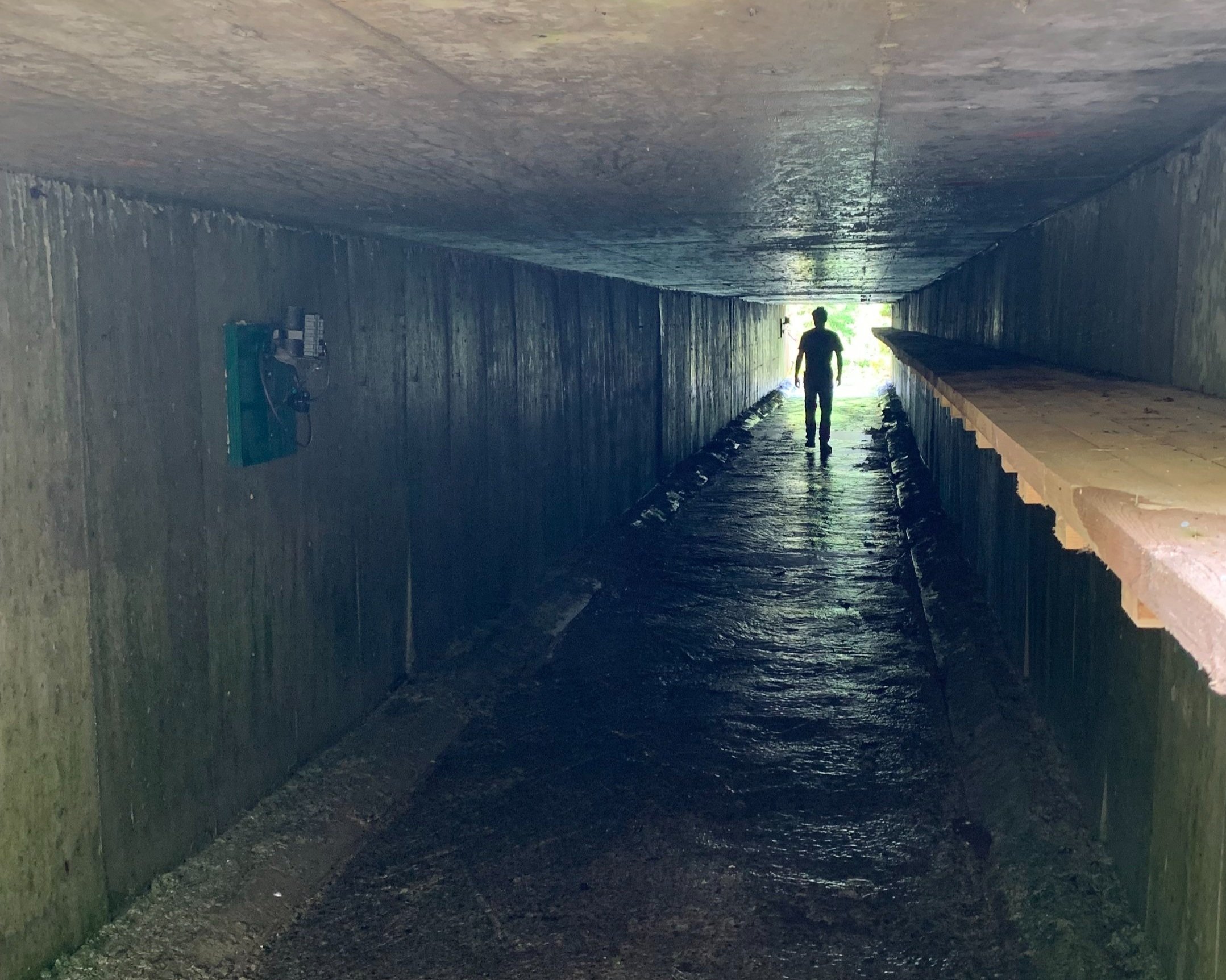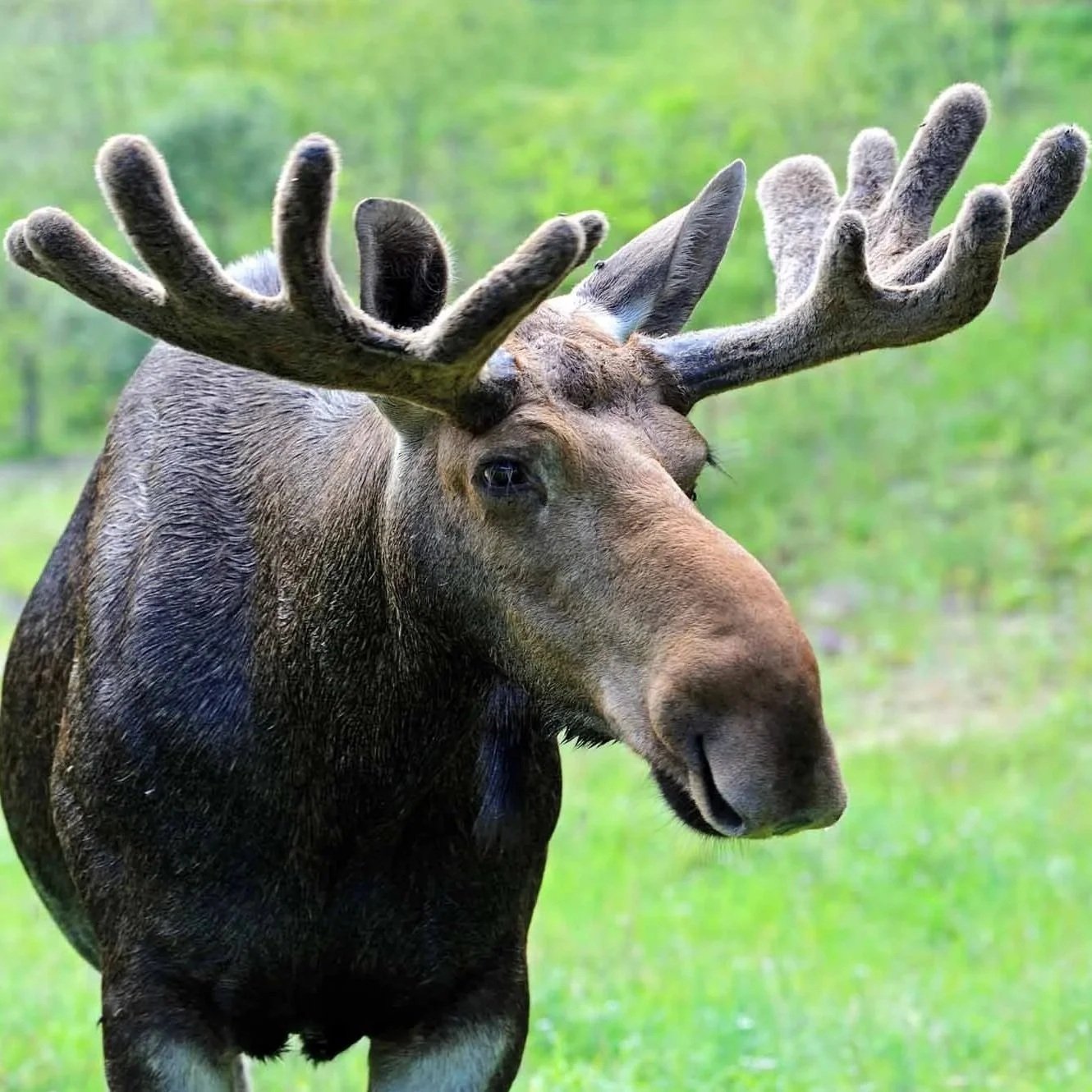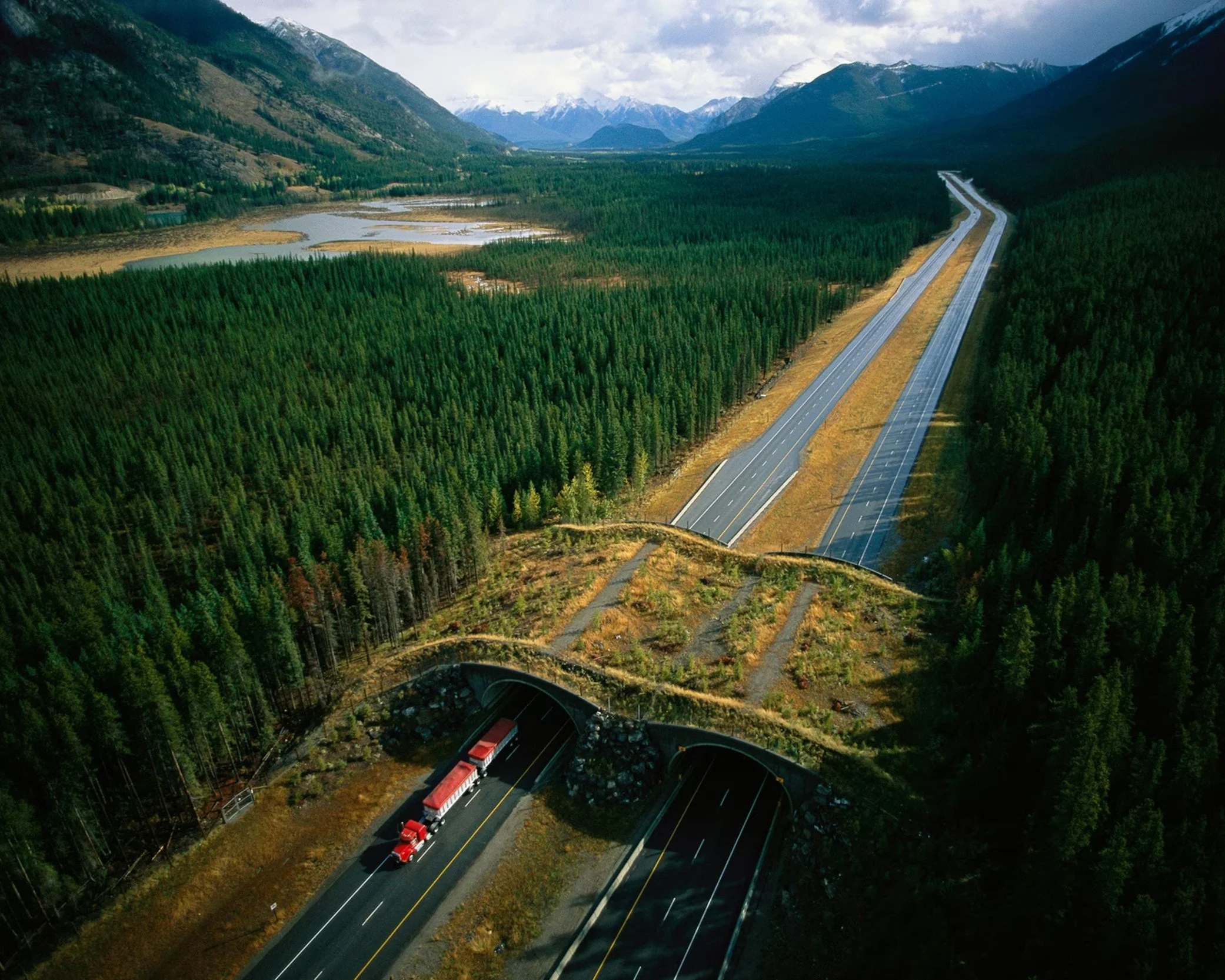Wildlife Corridors:
Bridging the Northeast for a Thriving Future
2022 Trebek Grantee
Kateri Monticone
Behind the scenes with Trebek Grantee Kateri Monticone and the crew capturing the story of wildlife crossings and habitat restoration in Canada.
This project celebrates the collaboration among communities, municipalities, woodlot owners, governments, and conservation organizations to reconnect habitats across provincial borders, creating lifelines for species such as lynx, moose, and turtles.
Building Wildlife Pathways for Resilience
Picture a family of moose, once isolated by roads and urban sprawl, now moving freely through conserved wildlife corridors.
This is the heart of Trebek Grantee Kateri Monticone's project, developed in partnership with the Nature Conservancy of Canada (NCC): consolidating ecological corridors through a whole-of-society approach to connect various habitat types needed for species’ different life stages and to adapt to climate change. Ecological corridors also support vital ecosystem services, such as the provision of food and clean air, as well as nutrient and water cycles. They promote human-wildlife coexistence and ways for people to connect with nature. It was with this in mind that, in 2017, the Quebec Ecological Corridors Initiative (QECI) was started.
Supported by funding from the Trebek Initiative and working with NCC, Kateri met with corridor creators across Eastern Canada to make a series of six short films. These films captures the challenges of habitat fragmentation, the conservation efforts underway, and the importance of engaging multiple stakeholders to ensure the ecological network's success.
EXPLORE THIS PROJECT
WATCH THE FILM
Nature is us.
Join Kateri Monticone as she travels across Eastern Canada, showcasing the creation of vital ecological corridors.
These pathways reconnect habitats, helping species adapt to climate change.
From Forillon National Park to the Laurentians, discover how communities, conservationists and scientists are working together for a resilient future.
MIGRATION BARRIERS
Fragmented Habitats: Wildlife in Crisis Requires a Safer Path
Human development is fragmenting habitats across Canada, cutting wildlife off from food, mates and shelter.
Species like wolves and moose struggle to move freely, leading to more collisions, reduced genetic diversity and weak ecosystems.
Preserving ecological corridors can lessen these impacts and ensure a better future for all.
Discover how we can reconnect nature’s pathways and protect Canada’s biodiversity.
STORIES OF HOPE
Stories of Hope: Working Together to Restore Northeast Corridors
Communities across the northeast are coming together to reconnect fragmented habitats and restore wildlife corridors.
From the forests of Quebec to the shores of Nova Scotia, these efforts are giving species like black bear, moose and lynx the freedom to roam again.
Driven by collaboration, these initiatives are revitalizing ecosystems, protecting biodiversity and building a future where people and nature thrive together.

Journey in the Corridors:
A Lifeline for Wildlife
Nature is essential to our survival, providing us with water and food, purifying our air, pollinating our crops and helping us have good mental health. It is an infinite source of benefits and possibilities. By respecting, protecting and celebrating it, humanity flourishes and prospers. But human activities are contributing to an increasingly rapid and profound transformation of our environment, shown most notably in climatic upheaval and a massive decline in biodiversity.
To halt this decline, the solution put forward has long focused on establishing protected areas that are home to remarkable species and environments. However, in landscapes modified by human activities, these islands of nature, surrounded by a sea of human development, can’t slow the biodiversity decline alone. With a better understanding of ecosystems, this has led to prioritizing an ecological network approach. This strategy is key to reconciling the health of nature and land use planning for the benefit of species and people alike.
As the climate crisis worsens, the ecological niche of North American species are expected to shift north, with some moving into Eastern Canada in search of new areas that will meet their needs. Conserving more of our vast natural habitats, especially the corridors that link them, ensures that wildlife can move safely between them
Explore the inspiring stories of communities working together to protect these vital corridors.
Watch Corridors: Nature’s Way
Language note: This video is in French. To watch with English subtitles, click the ⚙️ Settings icon on the video player, choose Subtitles/CC, then select Auto-translate → English.

Fragmented Habitats:
Impacted Species
Wildlife is significantly impacted by habitat fragmentation, as it relies on greater connectivity to access resources critical to its survival. Below are three of the many species that are particularly vulnerable to the impacts of fragmentation.
(© Eduard Kyslynskyy
Moose
Moose require vast connected spaces to roam. While forests make up the majority of their habitat, access to bodies of water, such as lakes, is just as important.
Moose have lost access to considerable portions of their habitat due to increased urbanization and fragmentation, threatening their survival.
Ecological corridors provide not only additional shelter from human activities (such as roads), they also allow the species to move freely across its range in order to access vital resources such as food and water.
(© Joe Crowley
Painted Turtle
Although Painted Turtles don’t require as much space as moose, they too rely on connected landscapes to survive.
While they spend most of their time in or around ponds and marshes, they also depend on areas of dense vegetation to hide from predators on land.
Habitat loss and fragmentation, as well as road mortality, are considered the biggest threats to the survival of painted turtles in Canada.
Golden-winged Warbler
Known for its bright yellow wing patch, the Golden-winged Warbler is highly sensitive to fragmentation and the loss of young, brushy forest. As habitat shrinks, they must compete with other birds for food, nesting sites, and breeding territories.
Known for its bright yellow wingtip, Golden-winged Warblers are particularly susceptible to the impacts of fragmentation and habitat loss.
This competition, which results in the depletion of critical resources, greatly affects the golden-winged warblers’ survival.
Learn More About Efforts to Restore Corridors
This project focuses on reconnecting and revitalising natural spaces to support a sustainable future for people, wildlife, and the environment. Through four short videos, Kateri explores the key elements of this work, from sustainable agriculture and forestry, to the leadership of First Nations in conservation, to making road networks safer for wildlife by aligning routes with animal movement and adding crossings, fencing, and speed measures so animals can move safely across roads.
Watch the videos below to learn more about each aspect of this project.
Agriculture
Supporting Ecological Connectivity in Agricultural Areas
Learn how corridors positively impact farming by shielding crops from heavy winds and snow, and how increased connectivity is crucial for the migratory species that travel across agricultural landscapes.
Forest Management in an Ecological Corridor
Forestry
First Nations
Connecting Natural Areas in Partnership with First Nations
Situated at the meeting point of New Brunswick, Quebec, and Maine, the area known as “trois frontières” (or “three borders”) is on the ancestral land of the Wolastoqiyik Wahsipekuk First Nation.
Actively involved in the area’s stewardship, Caroline Morais explains the Wolastoqiyik Wahsipekuk’s role as guardians of the land.
Finding Harmony Between Roads and Wildlife
Safer Paths
Deforestation and biodiversity loss are common consequences of urbanization.
In this video, forestry technician Marc Champagne discusses the importance of establishing long-lasting partnerships between the forestry industry and conservation experts.
In this video, we follow Francisco Retamal-Diaz, project coordinator at the Nature Conservancy of Canada, as he describes how the introduction of a wildlife crossing in the Breckenridge ecological corridor has led to a significant decrease in turtle mortality in the area.

The Nature Conservancy of Canada (NCC) launched the Quebec Ecological Corridors Initiative (QECI) in 2017 to accelerate the conservation of natural areas connected by ecological corridors. The initiative is coordinated by NCC and led by a group of 10 organizations. The group offers a collective approach to land use planning, and advises provincial and municipal governments, woodlot owners, farmers and other key stakeholders
Get Involved
Canada’s landscapes are not only beautiful, they are vital to the survival of countless species and essential for the health of our communities. Your support can make a real difference!
Donate
Your donation can help protect critical habitats, restore natural areas and make a lasting impact on Canada's wildlife.
Become a Conservation Volunteer
Join us in the field. Whether planting trees, restoring wetlands, or participating in conservation events. Your time can help create a healthier environment for everyone.
Together, we can leave a legacy of natural beauty and thriving ecosystems for future generations.
Share Our Mission
Spread the word on social media, talk to your friends and family, and inspire others to join the cause.

Northeast Wildlife Corridors Initiatives
Canadian provinces face unique challenges in maintaining and restoring natural corridors, but one common element ties these efforts together: the power of collaboration and community support.
From dense forests to diverse landscapes, conservation initiatives are driven by regional partnerships and the dedication of local communities. Discover how each province's distinct habitats are being reconnected, ensuring wildlife can thrive while people and nature coexist in harmony.

Quebec Ecological Corridors Initiative (QECI)
Quebec's diverse natural regions, from the Laurentians to Gaspésie, are under increasing pressure from urban sprawl, fragmentation and climate change. The Quebec Ecological Corridors Initiative (QECI) was launched by the Nature Conservancy of Canada (NCC) in 2017 to accelerate the conservation of natural areas connected by ecological corridors.
The initiative is coordinated by NCC and led by a group of 10 organizations that offer a collective approach to land-use planning and advise provincial and municipal governments, woodlot owners, farmers, and other key stakeholders. Learn more about QECI
-
Due to climate change, species’ habitat ranges are expected to shift northward by up to 45 kilometres per decade.
The areas covered by QECI’s lead partners contain varied and essential habitats for many species.
The area also acts as a key link with other provinces and states.
-
The preservation of ecological corridors is essential in allowing species to move freely between their habitats.
Economic and social activities can continue in these corridors with adaptations to ensure they do not impede connectivity.
The Plaisance-Tremblant corridor links two national parks with other conserved areas.
-
Successful conservation in Quebec depends on collaboration among local communities, scientists and policymakers.
Local corridors are part of a larger network at the provincial scale, which also connects with other key areas and borders.
Community involvement is key to shaping effective conservation strategies, demonstrating the power of shared knowledge and resources.

The Algonquin to Adirondacks (A2A) Collaborative
The Algonquin to Adirondack (A2A) region is rich and diverse. Home to many species, it also encompasses numerous protected areas, such as Algonquin Provincial Park in Ontario and Adirondack State Park in New York State.
A keystone area is the Frontenac Arch, a critical link between the boreal forests of Canada and the temperate forests of the United States. Recognized as one of the two UNESCO Biosphere Reserves of the A2A region, the Frontenac Arch Biosphere islands form a stepping-stone bridge in the middle of the St. Lawrence River, helping the migration of plants and animals. Learn more about the A2A Collaborative
-
The Frontenac Arch is home to a rich biodiversity, where five separate forest regions meet.
The region is home to many species at risk, like Wood Trush, Blanding's Turtle and Western Chorus Frog.
The Thousand Islands form a bridge over the St. Lawrence River, allowing species to cross this stretch of water and linking protected areas.
-
Expanding infrastructure, such as Highway 401, poses significant challenges to wildlife movement, fragmenting the Frontenac Arch region and restricting animal mobility.
Mortality due to collisions between wildlife and vehicles is the main direct impact of the road on wildlife, underlining the importance of providing safe crossings for wildlife.
-
A2A is working with multiple partners nationally and locally to connect the land and the people.
The Right to Roam report offers a bold strategy to restore connectivity, reduce wildlife mortality and improve driver safety in this critical continental wildlife pathway.

Staying Connected Initiative
The Northern Appalachian-Acadian region spans across the northeastern U.S. and southeastern Canada. It is home to a multitude of species and is critical for the connectivity of the entire Appalachian Mountains.
The Staying Connected Initiative (SCI) is a U.S. and Canadian public-private partnership focused on conserving and restoring ecological connectivity in this region. SCI has identified multiple key linkage areas that are essential to maintain connectivity between remaining core forests and support migration of species in response to climate change.
These linkage areas ensure that wide-ranging species like moose and bobcat can move between habitats, along with other species at smaller scales. SCI works with multiple partners at various scales and across borders to deploy innovative solutions for connectivity. Learn More
-
Multiple key linkage areas span across borders like the Northern Greens to Canada from Vermont to Quebec, The Three Borders Region in Maine, New Brunswick and Quebec, The Chignecto Isthmus, which link Nova Scotia to New Brunswick, and the Algonquin to Adirondacks Region, which connects Ontario and New York.
SCI partners work with local organizations and communities to improve and conserve connectivity within these regionally important linkage areas.
-
SCI strategies and projects include land conservation, land use planning, infrastructure mitigation, conservation science, engagement and capacity-building, and policy development.
These strategies are applied at multiple scales from the regional level, to the state and provincial level, down to the local level.

Project Partners
The Wolastoqiyik Wahsipekuk FIRST NATION
The Wolastoqiyik Wahsipekuk First Nation, formerly called the Maliseet of Viger First Nation, is the only Wolastoqey Nation in Quebec territory. Six other Wolastoqey Nations are in New Brunswick. After the loss of Viger's reserve lands in 1869, the community dispersed over the territories of Quebec, Canada and the United States.
Today, the First Nation owns a small reserve land at Cacouna in Bas-Saint-Laurent and the members still constitute a diaspora living on the Québec territory and beyond. Several members of the Nation still go to Wolastokuk, ancestral territory, to practice traditional activities.
The Nature Conservancy of Canada (NCC)
Canada's leading national land conservation organization. A private, non-profit organization, we partner with individuals, corporations, foundations, Indigenous communities and other non-profit organizations and governments at all levels to protect our most important natural treasures — the natural areas that sustain Canada’s plants and wildlife.
NCC secures properties (through donation, purchase, conservation agreement and the relinquishment of other legal interests in land) and manage them for the long term. Since 1962, NCC and its partners have helped protect more than 15 million hectares coast to coast to coast.
Quebec Ecological Corridors Initiative (QECI)
The Quebec Ecological Corridors Initiative (QECI) was launched by the Nature Conservancy of Canada (NCC) in 2017 to accelerate the conservation of natural areas connected by ecological corridors.
The initiative is coordinated by NCC and led by 10 organizations. The group offers a collective approach to land use planning, and advises provincial and municipal governments, woodlot owners, farmers and other key stakeholders. They also carry out mobilization, capacity building, recognition and support activities throughout southern Quebec.
QECI is supported by over 100 experts and stakeholders.
The A2A Collaborative is a U.S., Canadian and First Nations partner organization that works with scientists, policy makers and a variety of conservation groups to protect and enhance the unique ecological features and functions of the Algonquin to Adirondacks (A2A) region.
Their dream is a resilient, ecologically connected A2A region that sustains a full range of native wildlife and enhances people’s quality of life for generations to come.
The Staying Connected Initiative
The Staying Connected Initiative brings together a unique assemblage of government, non-government and academic partners to conserve, restore and sustain landscape connections across the Northern Appalachian/Acadian Forest region. SCI partners work at multiple scales in the U.S. and Canada to help safeguard native species from the impacts of habitat loss and fragmentation in a changing climate while also supporting healthy human communities and compatible interests and activities tied to the landscape.
Partners deploy conservation science, land conservation, restoration and stewardship, land use planning, transportation solutions, outreach and engagement, and policy initiatives to achieve these outcomes.
A partnership between the Royal Canadian Geographical Society and the National Geographic Society, The Trebek Initiative supports and amplifies projects that illuminate, explore, and help preserve Canada’s natural, cultural, and historical heritage.
Through grants to storytellers, scientists, and conservation leaders, the initiative funds bold, solution-driven projects that inspire Canadians to better understand their connection to the land, water, and wildlife.
Since its launch in 2021, The Trebek Initiative is proud to have supported 50 projects across the country, empowering a new generation of explorers to discover and share stories that drive awareness and action for a more sustainable future. Learn More
Explore Further
Stories from the Trebek Initiative’s Media Partners
Wildlife corridors are vital in reconnecting fragmented habitats and allowing animals to move freely through their natural environment. From local initiatives to international conservation efforts, these stories provide a deeper understanding of how connectivity is being restored to benefit wildlife, ecosystems, and communities.
Explore these articles from National Geographic and Canadian Geographic to see how communities are bridging the divide for animals across landscapes. Learn about innovative wildlife crossings, community-led restoration projects, and the impact of collaboration.
STORIES
How Wildlife Bridges Are Helping Animals Around the World
This article highlights how wildlife bridges, similar to those used in Canada, are becoming an essential part of infrastructure worldwide to help mitigate habitat fragmentation and wildlife collisions.
Roadkill rates fall as lockdown keeps drivers at home
During the 2020 lockdowns, roadkill rates dropped significantly as fewer vehicles were on the roads. Species like deer and mountain lions faced reduced threats, with roadkill incidents falling by up to 58% in some areas.
This decrease highlights how human activity affects wildlife and suggests potential conservation strategies, such as creating more wildlife crossings and limiting road traffic near key habitats.
Wildlife Crossings
Bridges and tunnels specifically designed for animals can reduce the environmental impact of highways.
STORIES
As Banff’s Famed Wildlife Overpasses Turn 20
This article celebrates 20 years of Banff National Park's wildlife overpasses and underpasses, detailing their global impact and success in reducing wildlife mortality rates by 80%.
Smother Nature: The struggle to protect Banff
In Banff National Park, Alberta, as in protected areas across the country, managers find it difficult to balance the desire of people to experience wilderness with an imperative to conserve it.
Follow @trebekinitiative on Instagram
For more inspiring stories and discoveries from our Trebek Initiative Grantees.
Stay informed about groundbreaking projects and witness the journey of exploration, innovation, and hope that illuminates and inspires appreciation for Canada's rich natural and cultural heritage.

























